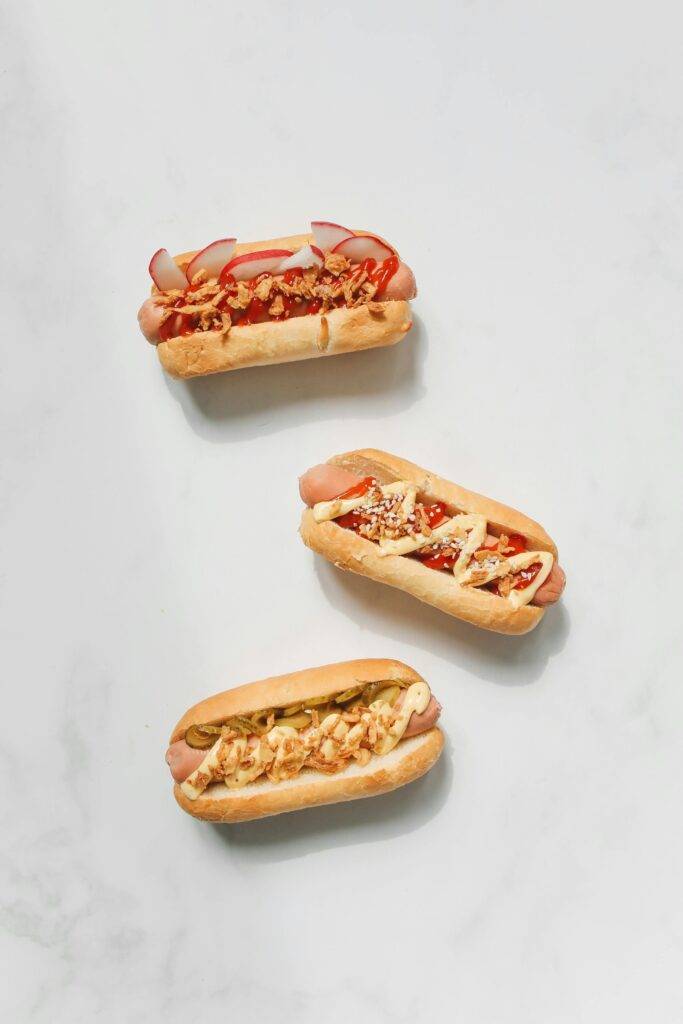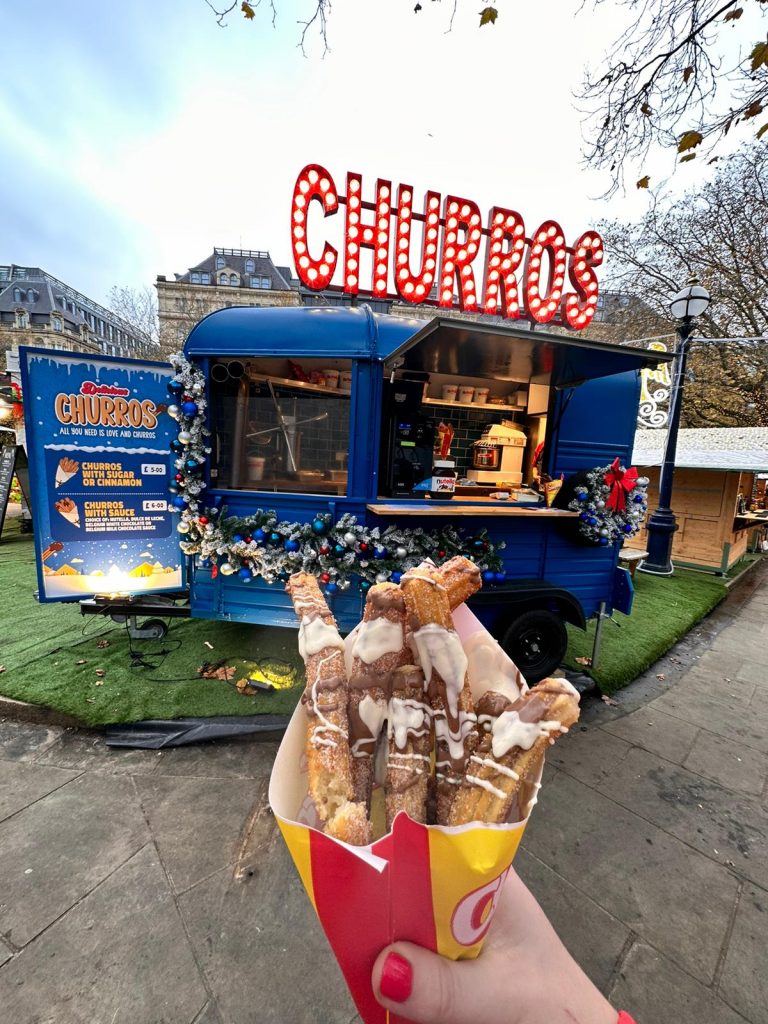The humble hot dog is a staple of American cuisine. It’s a symbol of summer cookouts, baseball games, and city street corners.
But the hot dog is more than just a quick bite. It’s a culinary canvas that showcases the diversity of America’s regional flavors.
From the classic New York-style hot dog to the chili-topped Coney Island variant, each region adds its unique twist. These variations reflect local tastes, cultural influences, and even historical events.
In this article, we’ll take a gastronomic journey across America. We’ll explore the regional hot dog variations that make this simple dish a national treasure.
We’ll delve into the ingredients, cooking methods, and cultural significance of these regional hot dog recipes.
So, whether you’re a food enthusiast or a hot dog aficionado, join us as we celebrate the hot dog in all its delicious diversity.
The American Hot Dog: An Overview
The hot dog has roots tracing back to Europe, where sausages were enjoyed centuries ago. German immigrants brought them to America in the late 1800s.
In America, the hot dog evolved into a beloved street food. Its popularity skyrocketed with the rise of hot dog stands and baseball parks. Easy to prepare and eat, they became a staple of American fast food culture.
Hot dogs hold a special place in American celebrations and traditions. They’re enjoyed at national events like the Fourth of July and during casual backyard barbecues. Each juicy bite is a nod to a rich culinary history intertwined with cultural significance.
The Classic Components of a Hot Dog
A typical hot dog starts with the sausage, often made of beef, pork, or a mix of meats. This juicy sausage is the star of the show, bringing flavor and texture.
Nestled within a soft, often toasted, hot dog and bun, the sausage finds its perfect home. The bun is an essential element, balancing the rich taste of the sausage.
Toppings add personality and flair to each hot dog. They can range from the simple to the extravagant, and popular toppings include:
- Mustard and ketchup
- Relish and onions
- Chili and cheese
These components together create a symphony of flavors in every bite.

New York-Style: The Urban Classic
The New York-style hot dog is a staple in the city that never sleeps. Served from iconic street carts, this hot dog offers simplicity and flavor.
This version features steamed onions and deli-style mustard. The straightforward topping allows the taste of the sausage to shine, making it a favorite among locals and tourists alike. The New York dog is perfect for grabbing and going during a busy day in the city.
Chicago-Style: The Garden on a Bun
Chicago takes its hot dogs seriously, crafting a masterpiece often called “dragged through the garden.” This vibrant style is colorful and refreshing, featuring a poppy seed bun as its base.
Topped with yellow mustard, chopped onions, bright green relish, tomato slices, a pickle spear, sport peppers, and a dash of celery salt, each bite is an explosion of flavors. What’s notably absent? Ketchup. In Chicago, ketchup is strictly off-limits for traditionalists.

Coney Island and Detroit: Chili Dog Rivals
Coney Island hot dogs have deep ties to classic American amusement parks. Known for their rich flavor, they feature a steamed bun and a beef sausage generously topped with chili, onions, and mustard.
Detroit adds its local twist to the Coney Island dog. The Detroit Coney is laden with a thicker, more bean-heavy chili. This variation highlights the city’s love of flavorful and hearty meals, creating a spicy and savory treat distinct to the region.
Southern Twists: Atlanta’s Slaw Dog and Texas Heat
In Atlanta, the “slaw dog” is a summer favorite. Crisp coleslaw is piled high on a classic hot dog, adding crunch and a tangy kick. This blend of flavors creates a refreshing experience perfect for southern picnics.
Texas brings the heat with its fiery hot dog. Topped with spicy chili, jalapeños, and cheese, the Texas hot dog packs a punch. This bold combination embodies the state’s love for flavor with a side of spice, leaving a lasting impression.
West and Southwest: Sonoran and Kansas City Creations
The Sonoran hot dog, originating from Arizona, is an indulgent delight. Wrapped in bacon, it combines beans, onions, and a medley of fresh toppings for a rich, satisfying taste. This flavorful twist showcases the Southwest’s vibrant culinary traditions.
Kansas City’s take is a savory blend that warms the soul. With sauerkraut and Swiss cheese, this hot dog offers a tangy, melted experience. These elements together create a deeply comforting meal, reflecting Kansas City’s hearty food culture.

The Bun Debate: Regional Bread Varieties
The hot dog bun is more than just a holder. Across America, the choice of bread varies significantly. Some regions favor steamed buns, while others go for toasted or even pretzel buns.
This diversity affects the overall texture and taste. In New England, split-top buns are a unique favorite. They offer a perfect balance of softness and a hint of sweet, catering to regional preferences.
Condiments and Toppings: More Than Just Ketchup and Mustard
Hot dogs are blank canvases for creativity. Traditional toppings like mustard and ketchup are just the beginning. Regions across America boast their unique flair.
In Chicago, a classic is never complete without a pickle spear and sport peppers. Meanwhile, down South, slaw provides a refreshing crunch that complements the sausage’s flavor beautifully. These regional toppings add depth to the iconic hot dog experience.
Hot Dog Culture: Stands, Trucks, and Baseball Parks
Hot dogs and American culture are intertwined. Street vendors and food trucks bring this beloved snack to the masses with creativity and flair.
Baseball parks enhance the experience, offering unique versions that reflect local tastes. Here, the hot dog becomes more than a meal; it’s a shared tradition, a culinary symbol that thrives in public gatherings and sporting events.
The Impact of Immigrant Communities on Hot Dog Varieties
Immigrant communities have profoundly shaped America’s hot dog culture. They introduce diverse flavors and unexpected ingredients into this classic fare.
From spicy sausages to exotic toppings, their influence is undeniable. This cultural fusion enriches regional styles and highlights America’s melting pot nature. Each new twist on the hot dog tells a story of migration, adaptation, and culinary innovation.
Health-Conscious and Alternative Hot Dogs
As dietary preferences evolve, so do hot dogs. Health-conscious eaters now have options beyond traditional meat.
Veggie dogs, turkey sausages, and gluten-free buns offer nutritious alternatives. These choices cater to diverse tastes and dietary needs, ensuring everyone can enjoy this American classic guilt-free.
Pairing Hot Dogs with Local Beverages
Hot dogs are not just about the food; the drink matters too. Local beers often pair perfectly with different regional hot dogs.
In Chicago, try a craft beer with your dog for an authentic experience. Meanwhile, a crisp soda might complement an Atlanta slaw dog best. Exploring these pairings can enhance the tasting adventure and introduce you to new beverage favorites.
The Economic and Cultural Impact of Hot Dogs
Hot dogs play a big role in the U.S. economy. Millions are sold every year, fueling businesses from carts to major franchises.
Culturally, hot dogs symbolize American gatherings like holidays and sports events. They bring people together, reflecting unity and shared traditions. As an icon of street food culture, the humble hot dog ties into stories of many vibrant communities across the nation.
Try It at Home: Regional Hot Dog Recipes
Recreating these regional hot dogs can be fun and satisfying at home. With some simple ingredients, you can enjoy these classic flavors.
Here’s a quick list of regional recipes to try:
- New York-Style: Sausage, steamed onions, mustard.
- Chicago-Style: Tomato, sport peppers, pickle.
- Detroit Coney: Chili, mustard, onions.
- Atlanta Slaw Dog: Coleslaw topping.
- Sonoran: Bacon, beans, and onions.
Dive into these hot dog recipes and explore the diverse palate of America.
Conclusion: The Enduring Legacy of the American Hot Dog
The hot dog remains an iconic symbol of American cuisine. Its versatility and regional variations make it a canvas for creativity.
Every bite tells a story of cultural influences and local traditions. From ballparks to backyard barbecues, hot dogs are here to stay.
As trends evolve, the humble hot dog will continue to adapt, delighting palates across generations with its unique flavors.































